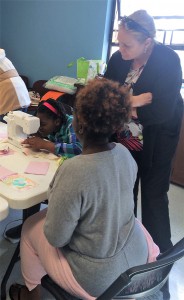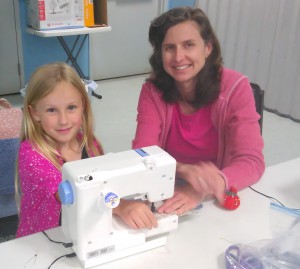by Melanie Taylor | Jan 11, 2019

Be mindful and enjoy the moment.
Now that the busy holiday season is over, it’s a time to reflect on the past but prepare and refocus for the new year ahead. As we focus on the new year, it is always refreshing to have a clean slate. As the year begins to unfold, there are tips to help you manage your day-to-day stress levels. It begins with mindfulness.
What is mindfulness?
Mindfulness means paying attention in a particular way; on purpose, in the present moment, and non-judgmentally.” Dr. Jon Kabat-Zinn (1991)
Mindfulness is best thought of as a way of being rather than an activity Almost any activity can be carried out with mindful awareness.
Three Key Features of Mindful Awareness:
- Purpose – intentionally and purposefully directing your attention rather than letting it wander.
- Presence – being fully engaged with and attentive to the present moment. Thoughts about the past and future that arise are recognized simply as thoughts occurring in the present.
- Acceptance – being non-judgmental toward whatever arises in the moment. This means that sensations, thoughts, and emotions are not judged as good or bad, pleasant or unpleasant; they are simply noticed as “happening” and observed until they eventually pass (Naik, Harris and Forthun 2016).
Mindfulness is a mind-body practice that has been found to benefit both psychological and physical health. The primary psychological change that occurs during mindfulness practice is an increased awareness of thoughts, feelings, and sensations in the present moment. Over time, mindfulness practice can help you to become aware of the space between noticing experiences and reacting to them by letting you slow down and observe the processes of your mind (Black 2010).
The ultimate goal of mindfulness practice is for you to take advantage of this space so you can make more intentional decisions – to wake up from living life on autopilot, based on unproductive habits of mind
(Black 2010; Walach et al. 2007).
According to the American Psychological Association, some empirically supported benefits of mindfulness include the following (Davis & Hayes 2011):
Psychological Benefits
- Increased awareness of one’s mind
- Significantly reduced stress, anxiety, and negative emotions
- Increased control over ruminative thinking (a major cause and symptom of depression and anxiety)
- Increased mental flexibility and focus
- More working memory
- Decreased distracting thoughts
- Decreased emotional reactivity
- Increased capacity for intentional, responsive behaviors
- Increased empathy, compassion and conscientiousness of other’s emotions
Physiological Benefits
- Enhanced immune system functioning
- Increased brain density and neural integration in areas responsible for positive emotions, self-regulation, and long-term planning
- Lowered blood pressure
- Lowered levels of blood cortisol (a major stress hormone)
- Greater resistance to stress-related illnesses such as heart disease
Spiritual Benefits
- Increased self-insight and self-acceptance
- Increased acceptance of others
- Increased compassion and empathy
- Increased sense of morality, intuition, and courage to change
- Increased control over automatic behaviors
- Increased self-discipline
The question is, how many of us would like to benefit from mindfulness if it provides these positive benefits? All of us should strive to lower our stress level and enjoy our daily lives with a more positive attitude and more attentiveness. So, how can we incorporate this into our lives? The majority of this practice is about familiarizing yourself with what it feels like to be mindful, and getting better at “remembering” to maintain mindful awareness.
Experiment with creating your own mindfulness practices throughout your day. Being mindful of the sensation on the soles of your feet as you walk to your car or the taste and texture of your morning coffee can transform routine moments into deeply satisfying practices. However, having a ritualized and structured practice can be beneficial. To find out more about practicing mindfulness and how to incorporate a more structured practice in your life visit read Mindfulness: An Introduction.
Sources: Mindfulness: An Introduction. 2013, 2016. Retrieved from the UF/IFAS Extension Electronic Data Information System: https://edis.ifas.ufl.edu/fy1381. Publication #FCS2335
by Heather Kent | Jul 29, 2016

Mrs. Ruth Ann Scurry, 2016 Florida 4-H Hall of Fame Inductee
Please join us in congratulating Mrs. Ruth Ann Scurry, Jefferson County 4-H Club Leader and Volunteer, on being inducted into the 2016 University of Florida 4-H Hall of Fame. Mrs. Scurry was one of only five individuals inducted this year, and the Florida 4-H Hall of Fame is the most prestigious award for Florida 4-H volunteers, alumni, and professionals.

Mrs. Scurry was accompanied by one of her sons and three of her grandchildren, representing 3 generations of 4-H!
Inductees are selected by the Florida 4-H Foundation Board. Mrs. Scurry was nominated by Jefferson County Extension Director Mr. John Lilly and Regional Specialized 4-H Agent Heather Kent. Read Mrs. Scurry’s inspirational 4-H Story, featured in last year’s Volunteer Appreciation Week Celebration. Thank you Mrs. Scurry for your leadership and dedication to the 4-H Program!
by Heather Kent | Apr 15, 2016
Today is our final post for this year’s National Volunteer Week Celebration. We’ve heard from several different types of volunteers- project club leaders, school volunteers, gardening volunteers and SPIN club volunteers. Today we will hear from Mrs. Linda Jones, a Gadsden County 4-H Community Club Volunteer. After retiring from a career of teaching, Mrs. Jones stopped by her local county extension office to ask some questions about her small farm. During her visit, the former county extension director, Dr. Henry Grant, told her about the 4-H program and asked if she would like to get involved as a volunteer. Mrs. Jones was sold! Since then, her club has been involved in multiple service projects that support local community members such as Second Harvest Food Bank and Relay for Life. Her club also participates in the North Florida Fair. In addition to being a community club leader, Mrs. Jones is also a certified overnight chaperone and chaperones youth every summer at 4-H Camp Cherry Lake. When asked what she enjoys most about her volunteer role with 4-H, Mrs. Jones shared:
“I taught school for 30 years, so I have a love of learning. I love that 4-H has so many different curricula and that almost everything in 4-H is a learning opportunity. I am just a kid at heart, and 4-H is a playground for learning.”
Mrs. Jones shared that another thing she appreciates about 4-H is their focus on safety. Paperwork and safety trainings are not her favorite aspect of 4-H, but Mrs. Jones admits that she sees the value in it and appreciates the protection it provides to both her and the kids in her club. “As a teacher, I am more focused on the learning part, but 4-H has trained me to keep safety a priority. For example, I wanted to take the kids horseback riding, and my agent pointed out that for 4-H activities, youth must wear a helmet while riding horses. I wouldn’t have thought of that on my own, but 4-H has my back. The legal ramifications can be challenging, but as a mother and grandmother, I see the value.”
In addition to being a community club leader, Mrs. Jones is also a certified overnight chaperone and chaperones youth every summer at 4-H Camp Cherry Lake. For years, she has taken her grandchildren to camp, who have acted reluctant to go. Recently, she learned that her grandkids may need to move for her daughter’s new job. She was shocked to learn that their first reaction to the news was dismay that they would have to miss Camp Cherry Lake! Mrs. Jones chaperoned 4-H University for the first time this past year, and she recalls a favorite memory of this 1st time experience. “Two of the youth that I took to 4-H University were graduating seniors and would soon be leaving for college. One of the most important things they took away from that experience was a real feeling of independence. One of the youth shared that having her own dorm room key made her feel grown up and mature. That is not what I would have expected, and it seems like a simple thing, but it is important.”
If you are thinking about becoming a community club volunteer, Mrs. Jones offers a word of advice, “Don’t get discouraged by the rules, regulations and policies- they will become your best friend and are in place to protect both you and the young people you are impacting.” If you would like to make a difference in your community the way that Mrs. Jones has, think about sharing your talents with us! You can fuel the extraordinary efforts of our youth by joining us as a volunteer. To find out more, contact your local UF IFAS Extension Office or visit http://florida4h.org/volunteers. Happy National Volunteer Appreciation Week- we hope you have enjoyed this year’s series with a peek inside some of the roles our volunteers serve!
by Stefanie Prevatt | Apr 14, 2016

Becky Pengelley, SPin Sewing volunteer
Many of our greatest relationships can be traced back to chance encounters. Evelyn Gonzalez and Becky Pengelly, the Leon County 4-H Sewing SPIN (Special Interest) Club Leaders, met by chance though the encouragement their 4-H Agent, Stefanie Prevatt. Evelyn learned of Leon County 4-H in the summer of 2014 through her service with the Tallahassee Chapter of the American Sewing Guild. A few short weeks later, Becky found the 4-H Office after learning about the program through her college coursework at the University of Florida. Both had a love of sewing, a passion for working with youth, and jam-packed schedules. Not to be deterred, Evelyn and Becky quickly decided Florida 4-H’s new SPIN club model was the best fit for their busy schedules. When asked why she choose to volunteer with 4-H, Evelyn replied:
“Volunteering is always gratifying. There is a need and you are trying to fill it. Working with youth is stimulating and rewarding. They are smart, fast, and funny. They make me laugh. You learn about what makes kids tick, what their concerns are, and you learn about what you are teaching [sewing].

Evelyn Gonzalez teaching youth how to sew patches of a quilt.
Sewing is expensive. The cost of material is the number one concern for the continual operation of the Leon County 4-H Sewing SPIN Club. Fees are necessary for some projects, but Evelyn and Becky work around this issue. Evelyn has lived in Tallahassee for years and has used her connectedness to solicit fabric donations to reduce fees for club members. Becky is a repurpose queen with a passion for teens. When asked what inspires her to continue to be a 4-H volunteer, Becky replied: “The teens in our clubs come to each meeting so excited about what we are going to do, and they have so many ideas about what they will make once they learn…4-H has provided opportunities for [them] to learn things that they wouldn’t learn anywhere else in the community.”
The Leon County 4-H Sewing SPIN club has been serving Tallahassee since early 2015. With each new “spin,” members embark on a journey of learning new skills and creating projects that show their mastery of the subject. One parent stated: “Ms. Evelyn and Ms. Becky are so patient with the students. They clearly put a lot of work and energy into every meeting. The students leave with increased confidence and skill, which is evident from the huge smiles on their faces. We so appreciate these two ladies, as well as the other volunteers that give so generously of their time. The students are inspired, as well as challenged, to do more than they thought they could.”

Evelyn and Becky teach youth and parents to sew!
For those thinking about volunteering with Florida 4-H, Evelyn and Becky have this advice: “Don’t be afraid to work with someone different from you. Becky is a young college girl. We think we’re busy. And they’re busier. I marvel that they carve out some time on a Saturday to come help teach sewing. Share the load. Work with a team” (Evelyn) “I have had the opportunity to meet new people and to share the things I love with them! If you have something to share with children, 4-H will support you in doing this!” (Becky)
If you have a desire to make a difference in your community, think about sharing your talents with us! You can fuel the extraordinary efforts of our youth by joining us as a volunteer. To find out more, contact your local UF IFAS Extension Office or visit http://florida4h.org/volunteers. Happy National Volunteer Appreciation Week- Come back tomorrow to learn about Gadsden County Community Club Leader, Mrs. Linda Jones.

by Melanie Taylor | Dec 11, 2015
 The holidays are often filled with time-honored traditions that include some of our favorite meals and foods. As you celebrate, think of little changes you can make this holiday season to create healthier meals and active days. An added bonus, these small changes may help you to avoid those extra holiday pounds we all fear each year. Happy Cooking!
The holidays are often filled with time-honored traditions that include some of our favorite meals and foods. As you celebrate, think of little changes you can make this holiday season to create healthier meals and active days. An added bonus, these small changes may help you to avoid those extra holiday pounds we all fear each year. Happy Cooking!
In the Kitchen:
• For gravies or sauces — if you are making pan gravy, first skim the fat off pan drippings. For cream or white sauces, use fat-free (skim) milk and soft tub or liquid margarine.
• For dressings or stuffing — add low-sodium broth or pan drippings with the fat skimmed off instead of lard or butter. Use herbs and spices and a whole grain bread for added flavor.
• For biscuits — use vegetable oil instead of lard or butter and fat-free (skim) milk or 1 percent buttermilk instead of regular milk.
• For greens — use skin-free smoked turkey, liquid smoke, fat-free bacon bits, or low-fat bacon instead of fatty meats.
• For sweet potato pie — mash sweet potato with orange juice concentrate, nutmeg, vanilla, cinnamon, and only one egg. Leave out the butter.
• For cakes, cookies, quick breads, and pancakes — use egg whites or egg substitute instead of whole eggs. Two egg whites can be substituted in many recipes for one whole egg.
• Use unsweetened applesauce or mashed ripe bananas instead of butter.
• Try cutting the amount of sugar listed in recipes in half.
• Use spices to add flavor such as cinnamon, allspice, or nutmeg instead of salt.
• Try baked apples with cinnamon and a sprinkle of sugar instead of apple pie.
• Invite your guests to make their own parfait with colorful sliced fruit and low-fat yogurt.
For meats and poultry (chicken and turkey):
• Trim away all of the visible fat from meats and poultry before cooking.
• Take off poultry skin before eating.
• Broil, grill, roast, poach, or boil meat, poultry, or fish instead of frying.
• Drain off any fat that appears during cooking.
• Chill meat and poultry broth until fat becomes solid. Skim off fat before using the broth.
• Skip or limit the breading on meat, poultry, or fish. Breading adds fat and calories. It will also cause the food to soak up more fat during frying.
• Choose and prepare foods without high fat sauces or gravies.
When Shopping:
• Start with a lean choice.
• The leanest beef cuts include round steaks and roasts (round eye, top round, bottom round, round tip), top loin, top sirloin, and chuck shoulder and arm roasts.
• The leanest pork choices include pork loin, tenderloin, center loin, and ham.
• Boneless skinless chicken breasts and turkey cutlets are the leanest poultry choice.
Use the food label to help you choose
• Choose extra lean ground beef. The label should say at least “90% lean.” You may be able to find ground beef that is 93% or 95% lean.
• Processed meats such as hams, sausages, frankfurters, and luncheon or deli meats have added sodium. Check the ingredient and Nutrition Facts label to help limit sodium intake.
• Fresh chicken, turkey, and pork that have been enhanced with a salt-containing solution also have added sodium. Check the product label for statements such as “self-basting” or “contains up to __% of __.”
• Lower fat versions of many processed meats are available. Look on the Nutrition Facts label to choose products with less fat and saturated fat.
De-Saturate
• Use a nonstick pan with vegetable cooking oil spray or a small amount of liquid vegetable oil instead of lard, butter, shortening, or other fats that are solid at room temperature.
Enjoy the Food, Fun, Friends and Family!
Cheers to Good Health
• Quench your thirst with low-calorie options. Drink water with lemon or lime slices. Offer seltzer water with a splash of 100% fruit juice.
Be the Life of the Party
• Laugh, mingle, dance, and play games. Focus on fun and enjoy the company of others.
Give to Others
• Spend time providing foods or preparing meals for those who may need a little help. Give food to a local food bank or volunteer to serve meals at a shelter during the holiday season. Giving back is a great mood booster.
Make Exercise a Part of the Fun
• Make being active part of your holiday tradition. Have fun walking and talking with family and friends after a holiday meal. Give gifts that encourage others to practice healthy habits such as workout DVDs, running shoes, and reusable water bottles.
Enjoy the Leftovers
• Create delicious new meals with your leftovers. Add turkey to soups or salads. Use extra veggies in omelets, sandwiches, or stews. The possibilities are endless!
Be sure your family and friends enjoy the food and fun, but focus on the time together. Remember this season is all about the memories, not just the food. You will feel better and enjoy your holiday time with less worry if you focus on staying healthy this season.
Source: USDA United States Department of Agriculture – www.MyPlate.gov







